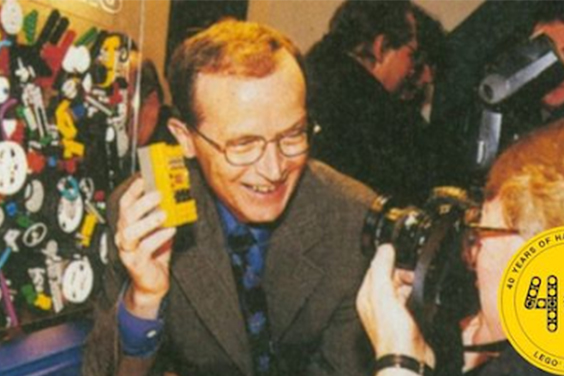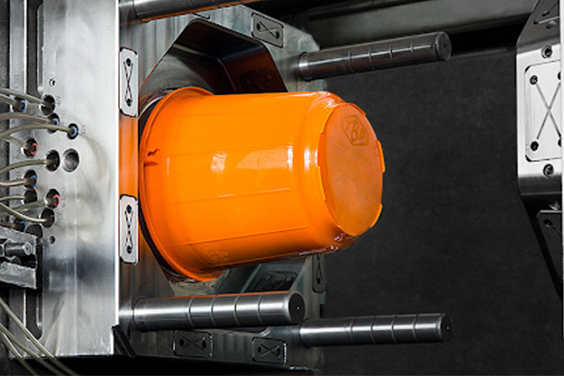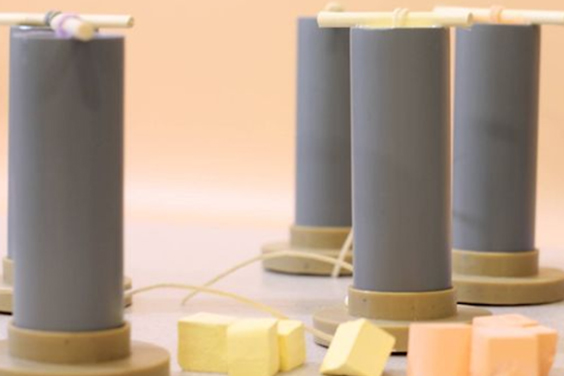Lego Molding: The History and Development
- Home
- > Blog
- > Lego Molding: The History and Development
Share :
Share :
There isn’t a single person alive who hasn’t played with LEGO at some point throughout their lives. We hand down bags of LEGO bricks from generation to generation, yet the firm still produces a lot of new LEGO every year. It is the world’s second-largest plastic toy mold manufacturer. The stringent standards used in the manufacture of the small blocks are one of the reasons for their popularity.
LEGOs are one of the most iconic and timeless children’s toys, yet you may be surprised to learn that they would not exist today without plastic injection molding. We look back at the history of LEGOs and how injection molding technology transformed a concept into a classic toy.
The History of LEGOs
Lego’s history began in 1932 in a Danish carpentry workshop and continues into the twenty-first century as a popular and highly profitable line of construction toys and related products and services, including Lego board games, retail stores, Lego video games, Lego films, Legoland theme parks, and Lego Serious Play consultant services, with a significant impact on various areas of popular culture.
The Origins of LEGO’s lego injection mold manufacturer Ole Kirk Christiansen, a Danish carpenter, began constructing wooden toys with his 12-year-old son, and as demand for their toys rose, he eventually founded the firm “LEGO,” which is Danish for “play well.”
Kristiansen bought a woodworking factory in Billund that had been in operation since 1895 in 1916. The business largely assisted in the construction of houses and furnishings, and it had a modest crew of apprentices. In 1924, a fire ignited some wood shavings, causing the workshop to burn down. Christiansen built a larger workshop and strove to develop his firm even further. When the Great Depression struck, he had fewer customers and was forced to concentrate on smaller projects. As a design help, he began creating smaller replicas of his items. These little miniatures of stepladders and ironing boards prompted him to start making toys.
As his toy company grew, Christiansen looked for a solution to enhance manufacturing efficiency and made a purchase that would put LEGO on the map and give it the household name it is today. He bought a plastic injection molding machine and began making plastic toys instead of wooden ones.
The plastic mold design injector, intended to quickly and accurately construct hundreds of identical toy parts and pieces, enabled Christiansen to produce large quantities of the same toy item and is credited with inventing the stacking plastic parts known as LEGOS.
The Plastic Injection Molding Process: How LEGOs Are Made
In 1952, the plastic injection molds could only produce twelve LEGO bricks at a time, requiring workers to physically feed the raw plastic pellets into the machine and manually trim the extra plastic off the bricks. As injection molding technology advanced into 3D printing, so did the production efficiency and product quality of LEGOs. LEGO’s mold gate and runner system developed, with the runner system being modified to automatically remove extra plastic from produced bricks, enabling for a one-step injection mold process.
The LEGO molds are the company’s most closely guarded secret, and it has been said that the original plastic molds were buried beneath the facility to safeguard this trade secret. Granules are heated to 450 degrees before being injected into molds under 25 to 150 tons of pressure for approximately 7 seconds before being allowed to cool on a rolling conveyor belt.
All of the fundamental Lego parts begin as plastic granules made mostly of acrylonitrile butadiene styrene — a substance Lego is attempting to avoid. These grains are transformed into identifiable bricks via a highly automated plastic injection molding service process. Because the production of a Lego brick necessitates extremely high temperatures and massive machinery, machines rather than humans manage the majority of their production.
Injection molding is the process of producing plastic items by injecting molten plastic into a prefabricated metal mold. The molten plastic is injected and allowed to cool at a set temperature and pressure. It is discharged as a formed component once it has hardened and conformed to the shape of the mold.
LEGOS To Date
Today, about 75 billion LEGO bricks are produced globally each year, with over 3,700 variations of the original plastic bricks.
LEGOS, like many other big manufacturers, is embracing green in its manufacturing procedures to help reduce unneeded plastic waste. In addition to incorporating plant-based elements into the manufacturing process in 2018, LEGO has updated its plastic mold process to allow any unfinished or broken components to be salvaged and repurposed rather than wasted as plastic trash.
What began as the aspirations of a father and son and an injection molding machine has evolved into an iconic toy that spans decades, with LEGOs becoming one of the most popular toys for both children and adults. Ole Kirk Christiansen probably had no idea that what he started with a single plastic injection mold machine would grow into amusement parks, life-size monuments, and even Hollywood blockbuster movies.
LEGO components are not biodegradable… but they are working on changing that. Right now, if you visit the LEGO website, you can find information on how to recycle LEGO. The first option is to give them to someone else or donate them. LEGO is ideal for passing on to future generations. All of the parts are designed to be compatible with blocks from older LEGO sets.
Four Interesting Facts About LEGOS and Plastic Injection Moldingare working
LEGO Minifigures are yellow for a reason. Almost every LEGO Minifigure is yellow. This is for reasons other than aesthetics or branding. Instead, it was a conscious choice not to designate the Minifigures a distinct ethnicity. When it comes to licensed LEGO mini-figures, such as those based on movies, the ethnicity of the actor who plays the character is preserved. This not only preserves ethnicity but also eliminates any fears about favorite characters being ‘yellow-washed.’
LEGOs can endure forces of up to 950 pounds! LEGOs are designed to survive for decades due to their incredibly small cellular architecture and military-like plastic manufacturing perfection, ensuring that they always fit flawlessly together. When you combine their strength with sharp angles and the characteristic studs, it’s easy to see why walking on a LEGO brick is so painful.
Every LEGO ever manufactured is designed to fit exactly with every other LEGO ever made: LEGO maintains size tolerances on the order of.0005 – or, in layman’s terms, deviations of half a thousandth of an inch. That means the LEGO kit you bought in fourth grade will still fit with the LEGO set your grandchild received for their first birthday. LEGOs are almost ageless due to superior process control and logistical integrity, with each one designed to be used in any LEGO brand kit, regardless of when or where it was purchased.
Each LEGO plastic injection mold can cost up to $200,000 in price. Why is the pricing so exorbitant? Because of its very accurate shape, each LEGO plastic injection mold is made to the highest standards and must be checked and cleaned regularly by a qualified LEGO crew to assure faultless block manufacturing.
Conclusion
Perhaps you are not the next Ole Kirk Christiansen (or perhaps you are!) If you want to build anything utilizing the plastic mold injection process, or just learn more about the journey of expediting the manufacturing of a tool or component, the staff at Immould is more than glad to assist.
Click here for a personalized quotation, or get in touch with us immediately!




